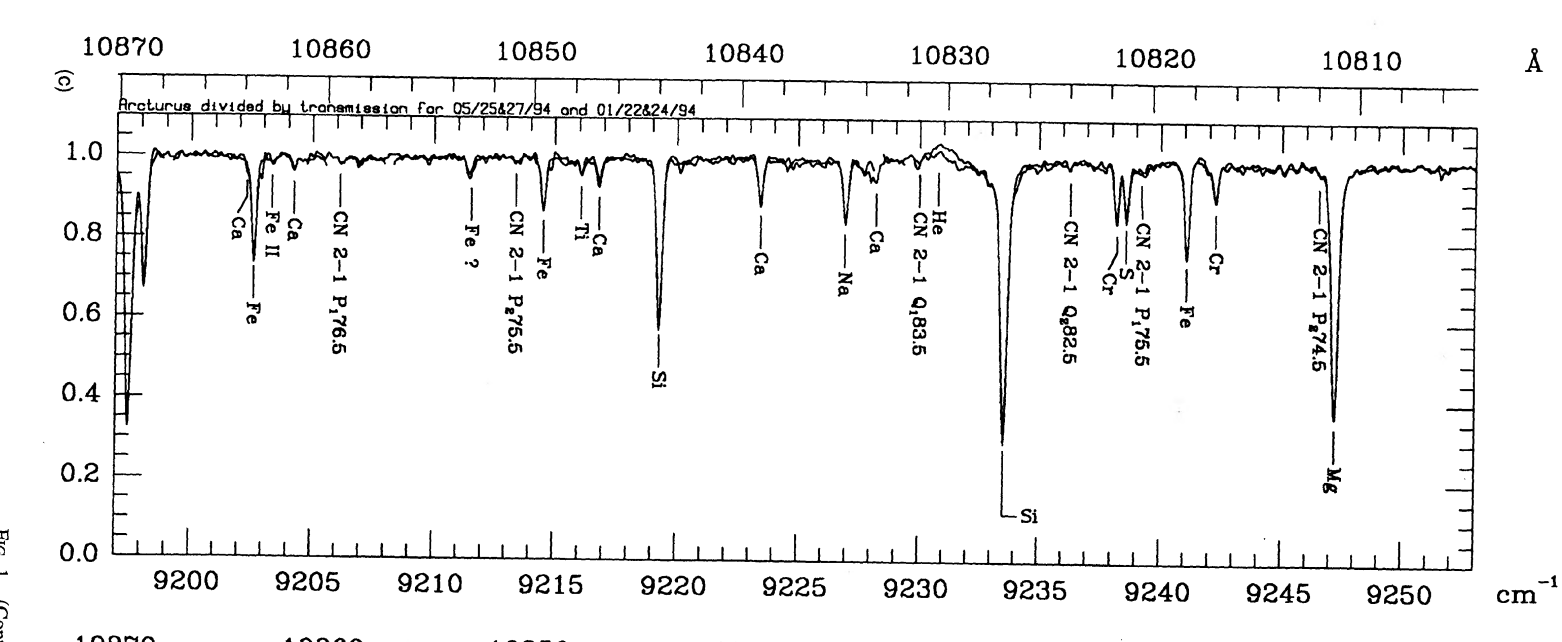Saha's equation "related ... the fine details in star spectra to the temperature and pressure of the [star's] atmospheres" making it easier to classify stars ("Cecilia Payne-Gaposchkin").
Helpful Research
Many important stellar discoveries greatly influenced and allowed for Cecilia Payne's later research.
Spectra
A star's spectra, as shown on the right, depicts the light coming from a star, and "the intensity of an absorption line [black line] in a star’s spectrum is in proportion to the concentration of atoms" in that star ("Cecilia Payne-Gaposchkin").
Link Block

Stellar Spectrum [Image courtesy Britannica]
"Scientists...succeeded in classifying stars according to their spectra" in the Hertzsprung- Russel Diagram ("Cecilia Payne-Gaposchkin").
"The differences in brightness between the stars of different spectral classes, and between the giant and dwarf stars of the same class, do not arise (directly at least), from differences in mass but from differences in structure."
~Henry Norris Russel
Saha Equation

Saha Equation
"Simplified model of the ionized stellar atmosphere, and inter alia, introduce an important parameter called the ionization potential denoted by U."
~ Saha Dattagupta
Spectral Composition: Previous Connotations
However, previous discoveries also opposed what we now know to be true.
"At the time stars were thought to have the same chemical composition as the Earth (mainly iron, oxygen and magnesium)" (smith et. al)
This article from 1910 claims that the star "Arcturus" has a similar composition to the earth's.
Link Block

Spectra Showing Star's Composition [Image Courtesy Infrared Atlas of the Arcturus Spectrum]
The elements shown in the star (Iron, Magnesium and Silicon) "seem remarkably similar to... the earth" (Hinke et. al. 1)
“All the Arcturus spectra were ratioed to a spectrum of the Earth's atmosphere... [and] identifications seem well in hand with the unidentified lines apparantly atmoic in origin. (The results of our calculations are briefly compared with published observational material)” (Hinkle et al. 5)
